Event Registration
Formation and Electrical Characterization of Gold-Tellurium Junctions on Individual DNA Origami
Adam T. Woolley, Basu R. Aryal, Dulashani R, Ranasinghe, Tyler R. Westover, Chao Pang, Asami Ehlert, Robert C. Davis, and John N. Harb
Departments of Chemistry and Biochemistry, Physics and Astronomy, and Chemical Engineering, Brigham Young University, Provo, Utah 84602-5700, USA
DNA-based fabrication of inorganic nanostructures may have applications in electronics, plasmonics, catalysis and more. Previously, successful efforts have shown DNA metallization to create conductive nanostructures [1,2]; however, DNAassembled semiconductor nanomaterials and well-connected metal–semiconductor junctions on DNA nanostructures are less developed. We describe here the creation of electrically connected metal–semiconductor junctions through siteselective placement of gold and tellurium nanorods on individual DNA origami, followed by gold plating [3]. Au nanorods are attached to DNA origami by hybridization of DNA linked to the nanorods, and Te nanorods are selectively localized on the DNA through electrostatic interaction. Electroless gold plating that fills gaps between Au and Te nanorods creates nanoscale metal–semiconductor interfaces. Two-point current-voltage (I-V) measurements show electrically connected Au–Te–Au junctions, with I-V properties consistent with a Schottky junction. An overview of the assembly process and results for nanorod localization, plating, device wiring, and I-V measurement are given in Figure 1. More recently, we have been evaluating polymer-constrained annealing of inorganic nanorods self-assembled on DNA origami to generate conductive nanowires [4] and metal–semiconductor junctions. DNA-templated fabrication of these nanoscale electrical systems offers exciting potential for future nanodevices, highlighting the power of bottom-up self-assembly.
References:
[1] Becerril, H.A.; Woolley, A.T. Chem. Soc. Rev. 38, 329-337 (2009).
[2] Aryal, B.R.; Westover, T.R.; Ranasinghe, D.R.; Calvopiña, D.G.; Uprety, B.; Harb, J.N.; Davis, R.C.; Woolley, A.T. Langmuir 34, 15069-15077 (2018).
[3] Aryal, B.R.; Ranasinghe, D.R.; Westover, T.R.; Calvopiña, D.G.; Davis, R.C.; Harb, J.N.; Woolley, A.T. Nano Res. 13, 1419-1426 (2020).
[4] Westover, T.R.; Aryal, B.R.; Ranasinghe, D.R.; Uprety, B.; Harb, J.N.; Woolley, A.T.; Davis, R.C. Langmuir 36, 6661-6667 (2020).
Acknowledgment: We are grateful to the United States National Science Foundation (CMMI 1562729) and BYU’s Simmons Research Endowment for support of this work.

© 2024 · Biophotonics4Future
Leibniz Institute of Photonic Technology
Albert-Einstein-Str. 9
07745 Jena | Germany
www.leibniz-ipht.de




